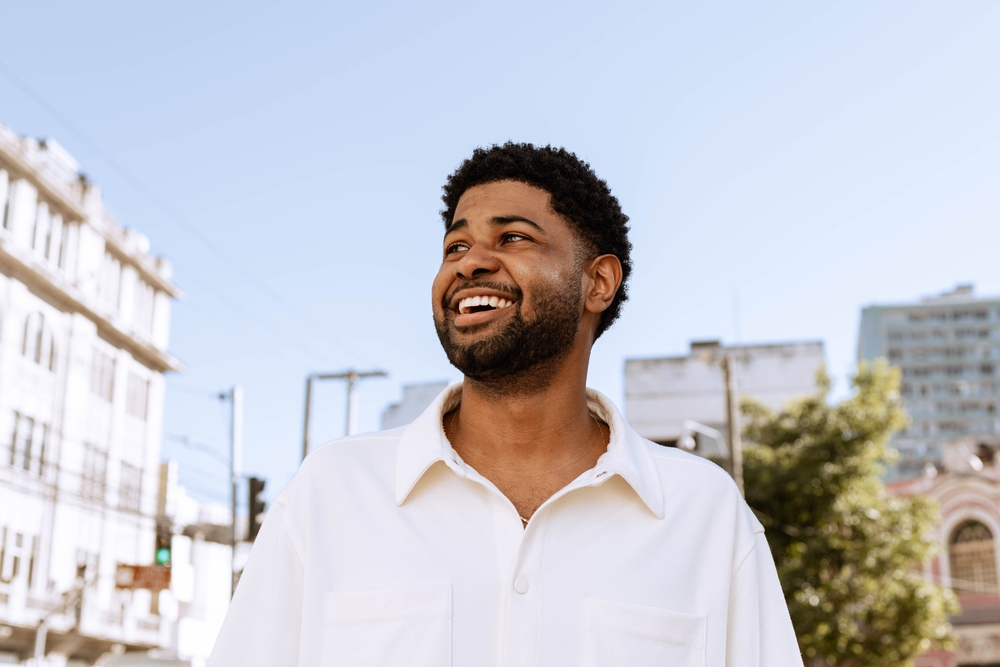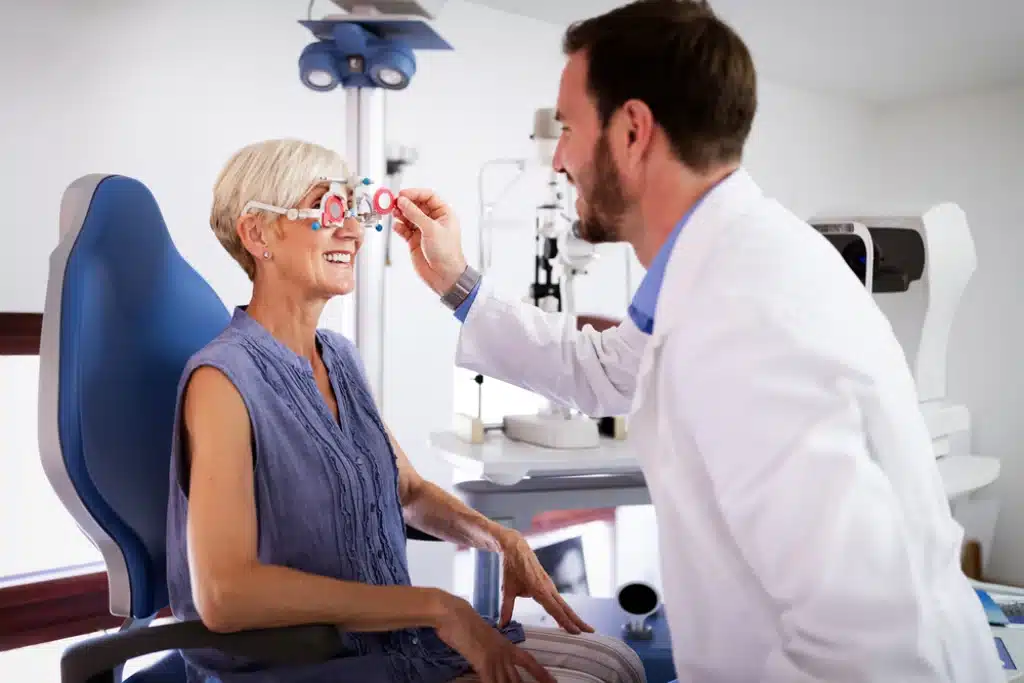Medically Reviewed by: Edward C. Wade, M.D., F.A.C.S.
Bifocal LASIK: Can LASIK Make You Bifocal-Free?
Can Bifocal LASIK really help you get rid of your bifocals for good? Many people must wear bifocals to help correct the inevitable deteriorating vision brought on by aging. Bifocals help correct a condition known as presbyopia (“old eye” in Greek), which causes blurred close-range vision, especially in low-light environments. With the onset of presbyopia, even those who have never before needed glasses may find themselves in need of bifocals — a frustrating occurrence for many patients.
While presbyopia can be improved with nothing more complex than reading glasses or bifocals, many people with the condition wish to return to a life with normal vision… and without corrective lenses. When it comes to a few minutes of undergoing LASIK vs. contacts for the rest of your life, many prefer undergoing surgery for a stress-free future.
Bifocal LASIK, better known as Monovision LASIK, is a popular surgical procedure for correcting age-related vision loss. For years, the prospects for surgical treatment of presbyopia weren’t exactly ideal. Luckily, things have changed. “Can you get LASIK if you wear bifocals?” is a valid question, and one increasingly becoming less and less of a concern as the surgery becomes more accessible to more patients.
What causes presbyopia?
The lens of the eye gets less flexible with age, making it harder for your eyes to adjust to lower levels of light and changes in distance, especially when said changes are made within close range. Since presbyopia occurs naturally as we get older, making an investment in prevention measures is difficult. In fact, presbyopia is so closely associated with aging, it has earned the discouraging nickname “Over 40 Vision.”
That’s the bad news.
The good news is that we have more information about LASIK eye surgery to correct presbyopia than ever before. We often get asked, “Can LASIK fix presbyopia?” Yes! Bifocal LASIK in particular is one of the many presbyopia treatment options available to patients.
What is Monovision LASIK?
Unfortunately, conventional LASIK eye surgery may not be used to treat presbyopia. However, there are other forms of bifocal-eliminating surgery available, such as Monovision LASIK.
Monovision LASIK is a unique take on your typical laser eye surgery. During the procedure, one eye (typically your dominant eye) is corrected. The other is made to be partially nearsighted. Such a change actually replicates the effects of bifocals, so the procedure is sometimes referred to as “blended vision LASIK” or “Bifocal LASIK.”
While Monovision LASIK is an effective surgical alternative to wearing bifocals, it does have its drawbacks. Although your eyes will now work together to see objects both near and far, you may still lose a small amount of clarity in your vision.
Monovision LASIK patient qualifications
Who is a candidate for LASIK? As technology grows more and more sophisticated every day, we’re seeing more and more people who were once unable to undergo the procedure now able to access vision-restoring care.
In order to qualify for LASIK, a patient must:
- Be 18+ years of age
- Not be nursing or pregnant
- Have good eye health
- Have good overall physical health
- Have the right thickness for creating a corneal flap (meaning those with thin corneas are not eligible)
If you don’t qualify for Monovision LASIK, don’t fret! There are still plenty of alternatives to LASIK available to you for stronger sight and peace of mind.
What are the side effects of Monovision LASIK?
As with other LASIK procedures, Monovision LASIK is a quick outpatient procedure taking around 15 to 20 minutes and requiring only localized anesthetic. Despite this simplicity, there are still side effects to know about before deciding to move forward with LASIK, including the following:
- Light sensitivity
- Decreased night vision
- Infection
- Dry eyes
Your surgeon will be able to give you a personalized overview of your healing process, including your risk of certain side effects, the aftercare process, and the length of your recovery period. All patients have to refrain from driving, strenuous exercise, swimming, and other activities following surgery, though the time frame will vary based on their physical circumstances.
Is Bifocal LASIK the solution for you? Find out with Eye Center of Texas!
Eye Center of Texas surgeons Dr. Edward C. Wade and Dr. Mark L. Mayo provide Bifocal LASIK and other vision correction procedures to help patients see the world in a whole new way…quite literally! We pride ourselves on offering safe, affordable care to all of our patients. To learn more about which procedures may be right for you, contact us today and schedule an appointment at any of our Houston-area locations.
More Helpful Articles by Eye Center of Texas:
- Can You Use Your FSA or HSA for LASIK?
- What is the Cost of Cataract Surgery in Texas?
- What Are The Early Symptoms of Glaucoma?
- Do You Get Dry Eyes After Refractive Surgery?
- Recovery Time After Eyesight Correction Surgery
Financing Options Available
Apply today to find a financing option that meets your needs.
Our Locations
Houston/Bellaire
6565 W. Loop S., Suite 650Bellaire, TX 77401
Medical Office:
713-797-1010
Medical Fax:
713-357-7276
LASIK/Near Vision:
Office: 713-395-1515
Fax: 713-357-7278
Pasadena
4415 Crenshaw RoadPasadena, TX 77504
Medical Office:
281-977-8800
Medical Fax:
281-977-8877
Sugar Land
15200 S.W. Freeway, Suite 130Sugar Land, TX 77478
Medical Office:
281-277-1010
Medical Fax:
281-277-4504
Clear Lake
455 E. Medical Center Blvd., Suite 110Webster, TX 77598
Medical Office:
281-332-1397
Medical Fax:
281-282-9152
Katy
Greenhouse Medical Plaza2051 Greenhouse Road, Suite 110
Houston, TX 77084
Medical Office:
346-547-7070
Medical Fax:
281-214-2971
The Woodlands/Conroe
100 Medical Center Blvd., Suite 118Conroe, TX 77304
Medical Office:
936-647-1610
Medical Fax:
936-647-1620


